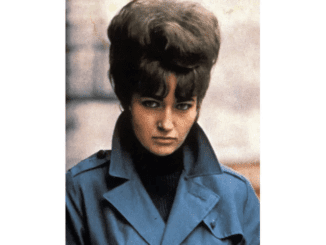It’s easy to take the warmth in our homes for granted, especially with electric heating so common in the developed world. But this convenience is the result of decades of innovation, with engineers and inventors continually striving to make heating safer, more efficient, and more accessible. Electric heating, in particular, has undergone an incredible journey from its early beginnings to the advanced, smart systems we enjoy today. Here’s a look at how electric heating evolved over time, starting from the 19th century.

The Dawn of Electric Heating: Edison’s Lightbulb and Early Inventions
The electric heater’s origins can be traced back to the invention of the lightbulb. In 1880, Thomas Edison patented the electric lightbulb, showcasing electricity’s potential to improve lives. But electric heating required more than a simple light source; it needed a strong, high-resistance wire that could handle intense heat without burning out.
In 1905, Albert Leroy Marsh introduced an alloy called chromel (now known as nichrome), a durable and heat-resistant material capable of withstanding temperatures up to 1,400 °C. Nichrome’s resilience made it ideal for use in electric heating elements, revolutionizing the field and paving the way for heaters that could withstand continuous use.
Early Electric Heaters: General Electric and Herbert Dowsing’s Innovations
The first electric heaters appeared in the early 1890s, created by General Electric in the United States. With Thomas Edison’s influence, these heaters relied on elongated glass bulbs to output heat. Across the Atlantic in the UK, engineer Herbert John Dowsing showcased an electric cooking method at the 1891 Crystal Palace Electrical Exhibition.
Dowsing’s company, the Dowsing Radiant Heat Company, produced some of the earliest heaters in Britain. His designs included long cylindrical bulbs and copper backings to radiate heat more effectively. These early models may seem rudimentary by today’s standards, but they were revolutionary at the time, bringing electric heating to UK homes.
The Rise of Portable Electric Heaters: Belling & Co.
In 1912, Charles Reginald Belling founded Belling & Co. in his Enfield shed. His electric heaters were compact, portable, and user-friendly, with designs resembling table lamps. A copper dish behind the heating element helped direct warmth outward, making these heaters an instant success.
The success of Belling & Co. was instrumental in popularizing electric heating, and by the mid-20th century, their products were found in households across Britain. These early models, with their copper-backed design, not only delivered warmth but also became cherished household items due to their reliable build.
Electric Heating Post-WWII: Radiant Bar Heaters and Portable Options
Following WWII, the surge in consumerism brought electric appliances into nearly every household. The iconic electric bar heater, or “radiant bar heater,” emerged during this period. Named for the glowing bars of coiled wire inside, these heaters provided strong, almost instant heat, making them popular for rooms of all sizes.
Despite their efficiency, early bar heaters posed safety concerns. Many had minimal protective guards, making it easy for accidental burns or fires to occur if the heater was tipped over or if clothing was left to dry on it. But for their time, these heaters represented a significant advancement in home heating, providing flexibility with a simple plug-in design.

The Storage Heater Solution: Addressing Energy Demands in the 1960s
As electric heating’s popularity grew, power usage became a concern, especially during daytime hours. Power stations struggled with a sudden drop in demand at night, leading UK Electricity Boards to develop a solution: storage heaters. These innovative devices used electricity overnight to heat thermal bricks, which then slowly released warmth throughout the day.
The storage heater system allowed consumers to take advantage of lower nighttime electricity rates. Though not always efficient, the system provided a cost-effective heating solution and maintained the electric grid’s stability. However, as technology advanced, the limitations of storage heaters—such as their inability to adjust to sudden temperature changes—became apparent.
Modern Advancements: The Shift to Energy-Efficient Electric Heaters
With new technology emerging, electric heating underwent significant changes. By the late 20th century, heaters had become more efficient, incorporating better heating elements and responsive controls. The rise of infrared and convection heaters provided homes with faster, more targeted warmth, and their energy efficiency far surpassed that of older models.
Digital technology further enhanced electric heating, bringing precise controls and timers to radiators and heaters. For example, modern electric radiators like the Haverland RC Wave feature digital control panels, allowing users to set customized heating schedules. This precision not only saves energy but also enhances comfort, giving homeowners complete control over their heating.
Smart Technology Revolution: Wi-Fi-Enabled and Self-Learning Heaters
Today, electric heating has embraced smart technology, offering unparalleled convenience. Wi-Fi-enabled heaters and thermostats can be controlled remotely via smartphone apps, allowing homeowners to adjust the temperature even when they’re away from home. This flexibility has redefined how we interact with home heating, promoting energy savings and adaptability.
One standout in this modern lineup is the Haverland SmartWave. This advanced heater includes occupancy sensors that detect movement, adjusting the heat based on the room’s activity level. It also uses self-learning technology to track a household’s routine, creating a heating schedule that matches daily habits. This smart technology optimizes energy use, making heating as intuitive as possible.
The Future of Electric Heating: Voice Commands and AI Integration
Looking ahead, electric heating systems may become even more integrated with our daily lives. Voice-controlled systems, connected via devices like Alexa or Google Assistant, are becoming more common, offering hands-free control. As artificial intelligence continues to evolve, we could see heating systems that not only anticipate our needs but also respond to environmental changes and personal preferences.
The engineers and inventors of the 19th century, who marveled at electricity’s potential, likely never imagined how far their ideas would go. From simple, glowing bulbs to smart heaters that can learn from our behavior, electric heating has come a long way—and its journey is far from over.
Conclusion: Embracing the Future While Honoring the Past of Electric Heating
Electric heating’s evolution reflects our desire for convenience, efficiency, and safety. What started with early experiments in the late 1800s has become an integral part of our modern lives. As technology continues to advance, electric heating is poised to become even smarter and more energy-efficient, offering us comfort with minimal environmental impact.
The history of electric heating serves as a reminder of how far we’ve come and an inspiration for where we can go. From Edison’s lightbulb to the SmartWave’s self-learning capabilities, electric heaters continue to evolve, shaping the warmth and comfort of our homes in ways that past generations could only dream of.


